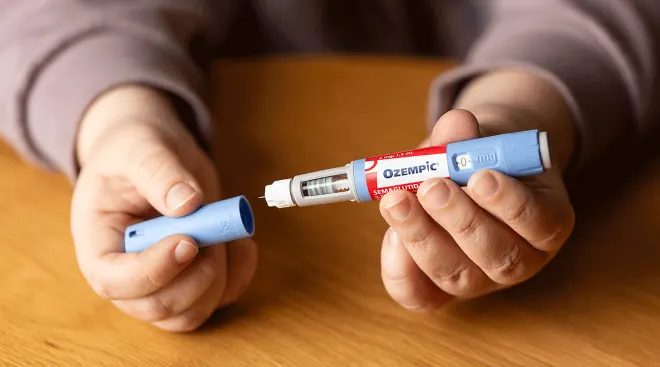What to Know About Reciprocal IVF
Reproductive technologies have come a long way in the last decade. For two people who have ovaries and a uterus, reciprocal IVF has emerged as a wonderful option to help them have a baby together. It allows both partners to contribute to the creation and development of their future baby. Considering your options for starting a family? You probably have a lot of questions. So what is reciprocal IVF and how does the process work? Learn everything you need to know, from average reciprocal IVF cost to success rates and other considerations to keep in mind.
Reciprocal IVF is a version of in vitro fertilization that allows for two individuals with ovaries to each play a biological role in creating and growing a baby. One partner provides the egg(s) that will be fertilized with donor sperm, and the other partner provides the uterus to carry the pregnancy. This allows both partners to each take on roles along the path to parenthood: One will carry and birth the baby, and the other will be genetically related to the baby. It’s an incredibly special experience, and one that’s especially helpful to those in the LGBTQ+ community.
Reciprocal IVF has unlocked new options for lesbian couples and pre-transition trans men. There’s something uniquely special about this path to parenthood, as it grants both partners in a relationship the opportunity to participate in the fertility journey, alongside a sperm donor. And trans men who have yet to begin their hormone replacement therapy and gender-reassignment surgery have the opportunity to move forward with the IVF process with a female partner using their own eggs or uterus.
If you and the person you’re choosing to have a child with both have ovaries and uteruses, there’s a distinct role for each of you. One partner assumes the role of the egg donor and undergoes the egg-retrieval process. The retrieved eggs are then fertilized using donor sperm (either from a sperm bank or a known donor) to create an embryo. That embryo is then transferred into the uterus of the other partner, who assumes the role of the gestational carrier. If implantation is successful, this partner will go on to carry the pregnancy.
From the time you confirm your sperm donor to successful implantation, reciprocal IVF can take as little as six to 10 weeks. Of course, timing can vary considerably from person to person, especially if you end up needing to try a few cycles before finding success. Below, a breakdown of the general process:
Evaluating your medical health
Your reciprocal IVF timeline will depend on several factors, including your own unique reproductive health and how long it takes you to identify a sperm donor. The initial phase, which includes your consultation and subsequent preliminary testing, will take approximately three to four weeks. Your doctor should evaluate the medical history of you and your partner, review certain requirements and perform some key tests (antral follicle count, evaluation of the uterus and ovaries and hormonal evaluation). Once this protocol has been completed, your doctor can advise you as to which partner should move forward in each role.
Finding a sperm donor
Next, you’ll need to identify a sperm donor. Depending on whether you’re using a known donor or anonymous sperm bank donor, there will likely be some routine tests and protocols that need to happen; these may take a few weeks to complete. Typically, working with a known sperm donor will make the process longer and require additional administrative support.
Retrieving the eggs
During this next stage, you’ll start your egg retrieval cycle. This includes approximately two weeks of ovarian stimulation (injectable medication to grow your follicles) and monitoring appointments, culminating in your egg retrieval, a safe, 20-minute outpatient procedure. Once your egg retrieval is complete, the eggs are fertilized with your chosen donor sperm to create embryos, which are grown over the course of five or six days, until they reach what is referred to as the blastocyst stage. At this point, you may choose to do pre-implantation genetic testing to confirm which embryo(s) are genetically “normal,” meaning they have the correct number of chromosomes and are best suited for a transfer.
Transferring the embryo
Your embryo transfer protocol will depend on whether you’re pursuing a medicated or “natural” cycle. In either case, the gestational carrier’s uterus will be prepared for transfer to ensure it’s a receptive home for your embryo (and future baby!). In many cases, this can happen almost immediately following the receipt of your genetic testing results. Two weeks following your transfer, you’ll come back to your clinic to confirm whether the embryo implanted successfully.
There’s a lot to think about before choosing to embark on a reciprocal IVF journey. For some couples, trying to start a family through reciprocal IVF is an easy decision. For others, it may take a considerable amount of time and thought to determine if this is the right path forward.
Here are some factors you’ll want to consider before choosing reciprocal IVF:
-
Physical implications. In vitro fertilization can be physically taxing, and the reciprocal IVF process can be hard on both parties involved. Common side effects of egg retrieval include some bloating and discomfort. More serious side effects may include ovarian hyperstimulation syndrome, ovarian torsion, infection and bleeding, though these are much more rare.
-
Reciprocal IVF roles. You’ll need to choose which partner’s eggs will be used and who the gestational carrier will be. This decision should be made under the guidance of your doctor and may be contingent on test results and other medical factors.
-
Emotional toll. This process can be stressful and anxiety-producing. What’s more, success isn’t a given, so you have to prepare yourselves for all possible outcomes.
-
Expenses. IVF can be very expensive, and there are no guarantees. You’ll want to evaluate the financial implications and weigh your options (more on this here).
-
Legal implications. There are several logistical and legal factors to talk through. For example, you’ll want to consider the fate of any frozen embryos that remain after a successful pregnancy, in the event of a divorce or death. Other legal implications include how and when to tell your child who the sperm donor is, and, if using a known sperm donor, how involved the donor wants to be. Also, depending on state laws, it may be difficult to have both partners’ names appear on the birth certificate. A family law attorney can help guide you through the process.
-
Other options. As you discuss your options for starting a family, you can also evaluate other avenues. In vitro fertilization using donor eggs is another possibility, as is intrauterine insemination (IUI), which involves deliberately placing sperm inside your uterus around the time of ovulation to assist with fertilization. (This is also typically a lot less expensive than IVF.) Of course, adoption is another route to consider.
Beyond these potential considerations and challenges, there are other big decisions to make before you officially commit to reciprocal IVF. Finding an inclusive fertility clinic that supports your path to parenthood is of the utmost importance.
With advancements made in reproductive technologies, success rates within IVF continue to get better. Reciprocal IVF success rates can vary from clinic to clinic, so it’s important to ask your doctor about their specific rates—especially among patients in your age range. A good rule of thumb is to plan to have two chromosomally normal embryos per desired child.
According to a CDC study, 55.1 percent of assisted reproductive procedures—the majority of which were IVF—where eggs were retrieved from and transferred to women ages 35 and under resulted in a live birth. At Spring Fertility, our live birth rate after transferring a chromosomally normal embryo is just over 62 percent. Of course, it’s important to remember that there are no guarantees.
Reciprocal IVF cost can also vary from clinic to clinic. A typical IVF cycle can range from $15,000 to $20,000, including medications. It’s not uncommon to need several cycles to achieve a successful pregnancy, which, of course, can bring the cost even higher. Any additional embryo transfer cycle may cost between $3,000 and $5,000 each. And if you choose to use a sperm bank, an individual sperm viral is roughly $1,000, and clinics often recommend purchasing two or more vials at a time.
Unfortunately, unless you have fertility-specific benefits as defined by your employer, the process of reciprocal IVF is generally not covered by insurance. The restrictive guidelines surrounding insurance coverage for fertility treatments is something that lobbyist groups are actively trying to change.
There’s a lot to consider on your journey to becoming a parent, regardless of the route that takes you there. Reciprocal IVF can be a beautiful experience shared between two partners. What’s more, advanced reproductive technologies offer more opportunities and a lot of hope to prospective parents.
About the expert:
Peter Klatsky, MD, MPH, is the founder and IVF director at Spring Fertility New York. He is dual board certified in reproductive endocrinology and infertility, as well as obstetrics and gynecology. He earned his medical degree from Mount Sinai School of Medicine, completed his residency in obstetrics and gynecology at UCSF and his fellowship in reproductive endocrinology at Brown University. He also received a Master’s degree in public health from Columbia University.
About Spring Fertility:
Spring Fertility was founded in 2016 with the goal of re-imagining fertility care and partnering with patients to help them achieve their goals. Spring believes that patients deserve superior clinical outcomes without compromising compassionate, patient-centric care, and offers comprehensive fertility services including IVF, egg and embryo freezing and preimplantation genetic testing. Spring Fertility currently has clinics throughout the San Francisco Bay Area, New York City and Vancouver.”
Please note: The Bump and the materials and information it contains are not intended to, and do not constitute, medical or other health advice or diagnosis and should not be used as such. You should always consult with a qualified physician or health professional about your specific circumstances.
Plus, more from The Bump:
Navigate forward to interact with the calendar and select a date. Press the question mark key to get the keyboard shortcuts for changing dates.




















































